1. Prince M, Wimo A, Guerchet M, Ali GC, Wu YT, Prina M, et al. World Alzheimer Report 2015: The Global Impact of Dementia. An Analysis of Prevalence, Incidence, Cost and Trends. London: Alzheimer's Disease International;2015.
2. Folstein MF, Folstein SE, McHugh PR. “Mini-mental state”. A practical method for grading the cognitive state of patients for the clinician. J Psychiatr Res. 1975; 12(3):189–198. PMID:
1202204.
3. Nasreddine ZS, Phillips NA, Bédirian V, Charbonneau S, Whitehead V, Collin I, et al. The Montreal Cognitive Assessment, MoCA: a brief screening tool for mild cognitive impairment. J Am Geriatr Soc. 2005; 53(4):695–699. PMID:
15817019.

4. Lee JY, Lee DW, Cho SJ, Na DL, Jeon HJ, Kim SK, et al. Brief screening for mild cognitive impairment in elderly outpatient clinic: validation of the Korean version of the Montreal Cognitive Assessment. J Geriatr Psychiatry Neurol. 2008; 21(2):104–110. PMID:
18474719.

5. Breton A, Casey D, Arnaoutoglou NA. Cognitive tests for the detection of mild cognitive impairment (MCI), the prodromal stage of dementia: meta-analysis of diagnostic accuracy studies. Int J Geriatr Psychiatry. 2019; 34(2):233–242. PMID:
30370616.

6. Bauer RM, Iverson GL, Cernich AN, Binder LM, Ruff RM, Naugle RI. Computerized neuropsychological assessment devices: joint position paper of the American Academy of Clinical Neuropsychology and the National Academy of Neuropsychology. Arch Clin Neuropsychol. 2012; 27(3):362–373. PMID:
22382386.

7. Müller S, Preische O, Heymann P, Elbing U, Laske C. Increased diagnostic accuracy of digital vs. conventional clock drawing test for discrimination of patients in the early course of Alzheimer's disease from cognitively healthy individuals. Front Aging Neurosci. 2017; 9:101. PMID:
28443019.

8. Wu YH, Vidal JS, de Rotrou J, Sikkes SA, Rigaud AS, Plichart M. Can a tablet-based cancellation test identify cognitive impairment in older adults? PLoS One. 2017; 12(7):e0181809. PMID:
28742136.

9. Sacco G, Ben-Sadoun G, Bourgeois J, Fabre R, Manera V, Robert P. Comparison between a paper-pencil version and computerized version for the realization of a neuropsychological test: the example of the trail making test. J Alzheimers Dis. 2019; 68(4):1657–1666. PMID:
30909209.

10. Wild K, Howieson D, Webbe F, Seelye A, Kaye J. Status of computerized cognitive testing in aging: a systematic review. Alzheimers Dement. 2008; 4(6):428–437. PMID:
19012868.

11. Zygouris S, Tsolaki M. Computerized cognitive testing for older adults: a review. Am J Alzheimers Dis Other Demen. 2015; 30(1):13–28. PMID:
24526761.
12. Statistics Korea. 2016 Statistics on the Aged. Daejeon: Statistics Korea;2016.
13. Kang Y. A normative study of the Korean-Mini Mental State Examination (K-MMSE) in the elderly. Korean J Psychol Gen. 2006; 25(2):1–12.
14. Christensen KJ, Multhaup KS, Nordstrom S, Voss K. A cognitive battery for dementia: Development and measurement characteristics. Psychol Assess. 1991; 3(2):168–174.

15. Chin J, Park J, Yang SJ, Yeom J, Ahn Y, Baek MJ, et al. Re-standardization of the Korean-Instrumental Activities of Daily Living (K-IADL): clinical usefulness for various neurodegenerative diseases. Dement Neurocogn Disord. 2018; 17(1):11–22. PMID:
30906387.
16. Mosteller F, Tukey JW. Data Analysis and Regression: a Second Course in Statistics. Boston, MA: Addison-Wesley Publishing Company;1977.
17. Kang Y, Jahng S, Na DL. Seoul Neuropsychological Screening Battery. 2nd ed. Seoul: Human Brain Research & Consulting Co.;2012.
18. Molinuevo JL, Rabin LA, Amariglio R, Buckley R, Dubois B, Ellis KA, et al. Implementation of subjective cognitive decline criteria in research studies. Alzheimers Dement. 2017; 13(3):296–311. PMID:
27825022.

19. Petersen RC, Smith GE, Waring SC, Ivnik RJ, Tangalos EG, Kokmen E. Mild cognitive impairment: clinical characterization and outcome. Arch Neurol. 1999; 56(3):303–308. PMID:
10190820.
20. McKhann G, Drachman D, Folstein M, Katzman R, Price D, Stadlan EM. Clinical diagnosis of Alzheimer's disease: report of the NINCDS-ADRDA Work Group under the auspices of Department of Health and Human Services Task Force on Alzheimer's Disease. Neurology. 1984; 34(7):939–944. PMID:
6610841.

21. Yi H, Chin J, Lee BH, Kang Y, Na DL. Development & validation of Korean version of trail making test for elderly persons. Dement Neurocogn Disord. 2007; 6(2):54–66.
22. Greenacre M, Blasius J. Multiple Correspondence Analysis and Related Methods. New York, NY: Chapman and Hall/CRC;2006.
23. Stigler SM. The History of Statistics: The Measurement of Uncertainty before 1900. Cambridge, MA: Belknap Press of Harvard University Press;1986.
24. Andrieu C, Roberts GO. The pseudo-marginal approach for efficient Monte Carlo computations. Ann Stat. 2009; 37(2):697–725.

25. Gelman A, Carlin JB, Stern HS, Dunson DB, Vehtari A, Rubin DB. Bayesian Data Analysis. New York, NY: Chapman and Hall/CRC;2013.
26. Geyer CJ. Introduction to Markov Chain Monte Carlo. In : Brooks S, Gelman A, Jones GL, Meng XL, editors. Handbook of Markov Chain Monte Carlo. 1st ed. New York, NY: Chapman and Hall/CRC;2011. p. 45.
27. Cho Y, Seong JK, Jeong Y, Shin SY. Alzheimer's Disease Neuroimaging Initiative. Individual subject classification for Alzheimer's disease based on incremental learning using a spatial frequency representation of cortical thickness data. Neuroimage. 2012; 59(3):2217–2230. PMID:
22008371.

28. Qiu A, Bitouk D, Miller MI. Smooth functional and structural maps on the neocortex via orthonormal bases of the Laplace-Beltrami operator. IEEE Trans Med Imaging. 2006; 25(10):1296–1306. PMID:
17024833.
29. Vallet B, Levy B. Spectral geometry processing with manifold harmonics. Comput Graph Forum. 2008; 27(2):251–260.

30. Rugg MD, Otten LJ, Henson RN. The neural basis of episodic memory: evidence from functional neuroimaging. Philos Trans R Soc Lond B Biol Sci. 2002; 357(1424):1097–1110. PMID:
12217177.

31. Vannini P, Hedden T, Becker JA, Sullivan C, Putcha D, Rentz D, et al. Age and amyloid-related alterations in default network habituation to stimulus repetition. Neurobiol Aging. 2012; 33(7):1237–1252. PMID:
21334099.

32. Parra MA, Abrahams S, Fabi K, Logie R, Luzzi S, Della Sala S. Short-term memory binding deficits in Alzheimer's disease. Brain. 2009; 132(Pt 4):1057–1066. PMID:
19293236.

33. Swainson R, Hodges JR, Galton CJ, Semple J, Michael A, Dunn BD, et al. Early detection and differential diagnosis of Alzheimer's disease and depression with neuropsychological tasks. Dement Geriatr Cogn Disord. 2001; 12(4):265–280. PMID:
11351138.

34. Fowler KS, Saling MM, Conway EL, Semple JM, Louis WJ. Paired associate performance in the early detection of DAT. J Int Neuropsychol Soc. 2002; 8(1):58–71. PMID:
11843075.

35. Blackwell AD, Sahakian BJ, Vesey R, Semple JM, Robbins TW, Hodges JR. Detecting dementia: novel neuropsychological markers of preclinical Alzheimer's disease. Dement Geriatr Cogn Disord. 2004; 17(1-2):42–48. PMID:
14560064.
36. Rentz DM, Parra Rodriguez MA, Amariglio R, Stern Y, Sperling R, Ferris S. Promising developments in neuropsychological approaches for the detection of preclinical Alzheimer's disease: a selective review. Alzheimers Res Ther. 2013; 5(6):58. PMID:
24257331.

37. Didic M, Barbeau EJ, Felician O, Tramoni E, Guedj E, Poncet M, et al. Which memory system is impaired first in Alzheimer's disease? J Alzheimers Dis. 2011; 27(1):11–22. PMID:
21799246.

38. Camina E, Güell F. The neuroanatomical, neurophysiological and psychological basis of memory: current models and their origins. Front Pharmacol. 2017; 8:438. PMID:
28713278.

39. Yonelinas AP, Ranganath C, Ekstrom AD, Wiltgen BJ. A contextual binding theory of episodic memory: systems consolidation reconsidered. Nat Rev Neurosci. 2019; 20(6):364–375. PMID:
30872808.

40. Koo BM, Vizer LM. Mobile technology for cognitive assessment of older adults: a scoping review. Innov Aging. 2019; 3(1):igy038. PMID:
30619948.

41. Jenkins A, Lindsay S, Eslambolchilar P, Thornton IM, Tales A. Administering cognitive tests through touch screen tablet devices: potential issues. J Alzheimers Dis. 2016; 54(3):1169–1182. PMID:
27567875.

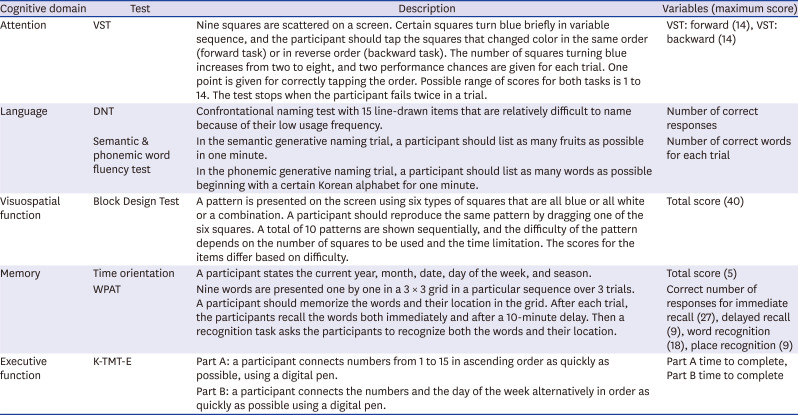


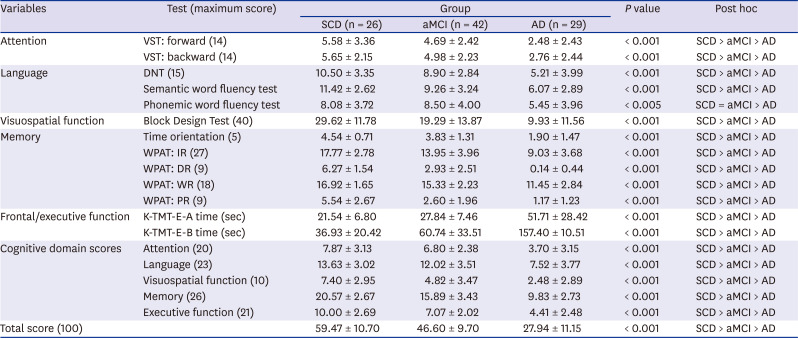
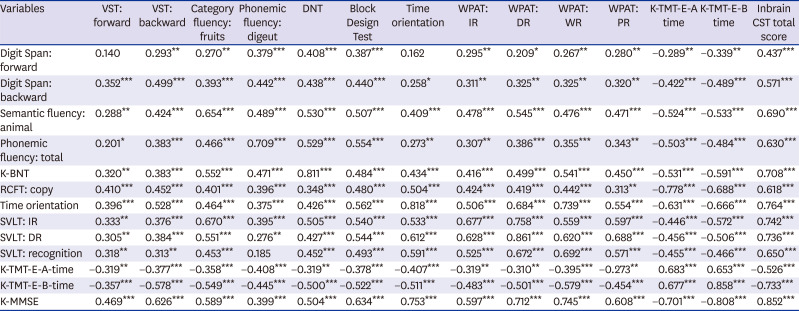
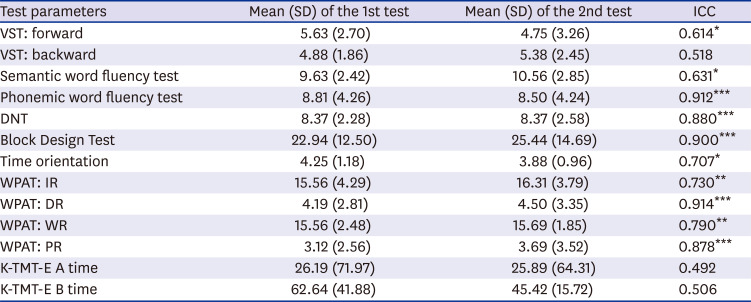

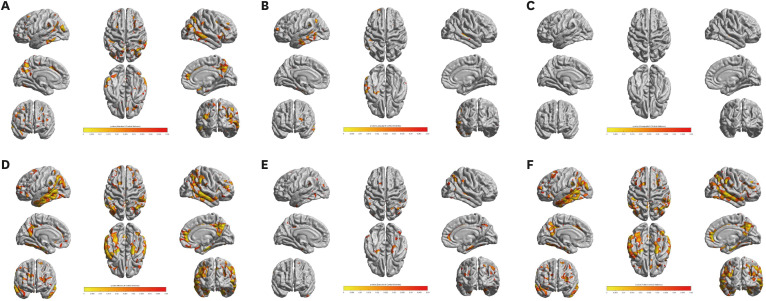




 PDF
PDF Citation
Citation Print
Print



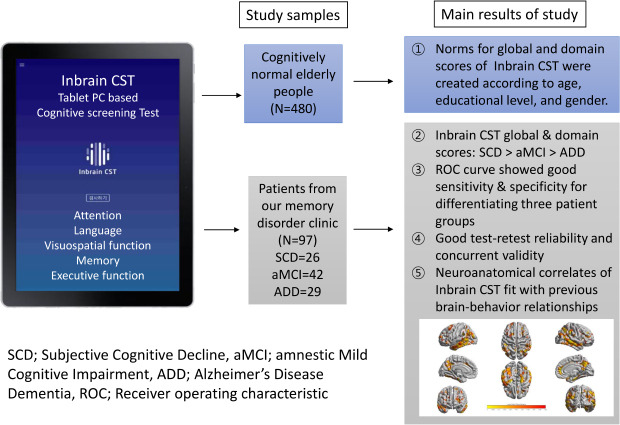
 XML Download
XML Download